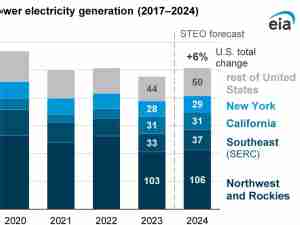The freeze-driven shuttering of core sections of the U.S. refining system isn’t all good news for rival plants in Europe. Down at the bottom of the barrel, losses are deepening.
While U.S. shutdowns mean less competition for European refiners in supplying gasoline and diesel on both sides of the Atlantic, they also remove an important export market for the remnants of the refining process—products known as fuel oil.
With much of the U.S. Gulf Coast in recovery mode after February’s extreme weather, many of those barrels need a new home. That is acting as a drag on margins for those refineries that churn out relatively large amounts of higher-sulfur fuel oil.
“The U.S. is suddenly not taking so many cargoes a month transatlantic,” said Hedi Grati, a director at IHS Markit. “It needs to find another outlet.”
Gulf Coast refineries regularly import bottom-of-the-barrel feedstocks from Europe and Russia, turning them into higher-value fuels like diesel and gasoline. But with so many outages on the Gulf Coast, there’s little appetite from that region for such cargoes at the moment.
As a result, exports toward the U.S. from Europe and Russia of dirty petroleum product—including various grades of mostly high-sulfur fuel oil and vacuum gasoil—have plunged. They sank by 136,000 barrels a day, or about 40%, during the period February 1-23 compared with January, and by roughly 50% year-on-year, according to tanker analytics firm Kpler. The figures don’t include dirty shipments known to be low-sulfur.
Lack of Demand
That’s led to diminished demand for European barrels, which is helping to push down the value of high-sulfur fuel oil relative to crude oil, known as the crack spread. In northwest Europe, the measure recently fell to its lowest since May.
“High-sulfur fuel oil cracks in Europe—but also in the U.S. Gulf Coast and Singapore—are under pressure due to lower seasonal utility demand in the Middle East and refinery outages in the United States, drawing less fuel oil as heavy feedstock,” Grati said.
With Gulf Coast refiners beginning to resume operations, the absence of U.S. demand for bottom-of-the-barrel material might prove short-lived. But there is another bearish factor on the horizon: OPEC+ may start ramping production back up, and its output of heavier, sulfurous crudes is likely to result in more high-sulfur fuel oil being made.
“You would essentially be replacing light, sweet, U.S. crude with primarily medium sours, which have a much higher yield of HSFO,” said Chris Barber, principal of ESAI Energy. That “should increase HSFO supply,” he said.








